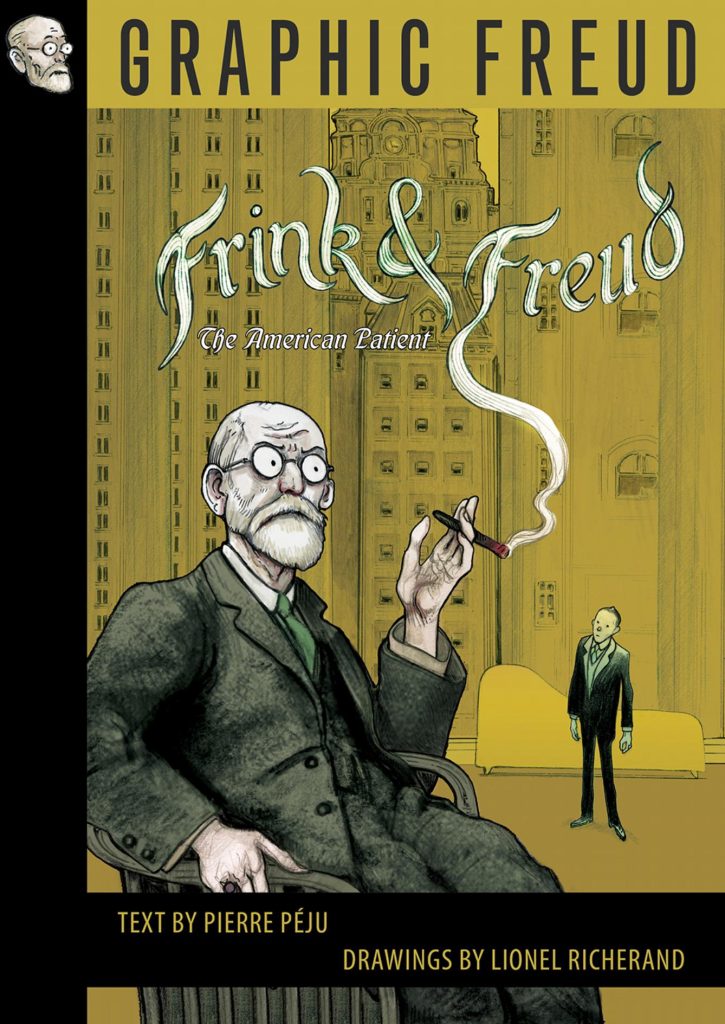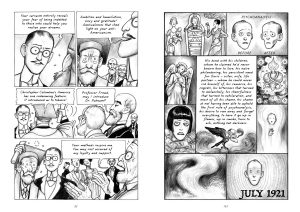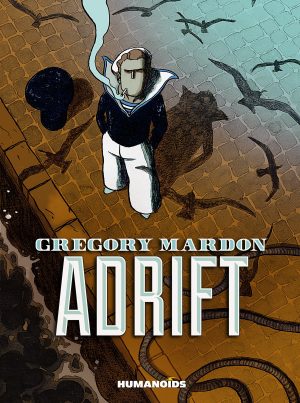Review by Frank Plowright
This third volume in the Graphic Freud series differs greatly from the previous two, and is best approached as an individual biography rather than part of the series. It reveals aspects of Freud’s career that may have evaporated were it not for the 1989 donation of Horace Frink’s papers to a university, and while Freud’s role is pivotal, this is definitely a biography of the ultimately tragic Frink.
Pierre Péju opens with Sigmund Freud recording his thoughts about the United States, which he visited to deliver a series of lectures on psychoanalysis in 1909. He notes the contrast between the myth of the American Dream and the reality of so many struggling in poverty, and continues with the details of Freud’s visit in the company of disciples Sándor Ferenczi and Carl Jung.
They’re treated as a knockabout comedy trio shown constantly sniping at each other, intellectually scoring points via analysis as if an episode of Frasier, while Lionel Richerand supplies them with animated cartoon reactions. Pricking the pomposity of much written about Freud is valid, but for anyone whose expectations are based on The Wolf Man and Hysteria it may come as a shock.
Richerand’s pages straddle a line between realism and cartooning, featuring precise panels packed with detail establishing locations. His views of New York as visited by Freud are neat reconstructions of famous architecture and busy street scenes, while the Frink household of the late 1800s is packed with period furniture, along with the young Horace Frink’s Lovecraftian nightmares. Personalities transmit and Richerand is a talented artist sometimes taking a debateable approach.
If seen in terms of Freud alone, almost two-thirds of Frink and Freud is in effect a preface. It notes how Freud almost snubs Frink during his American visit, then reveals Frink’s youth with a domineering father and neglectful mother, showing him haunted by fire after seeing his father’s business burn down. This is presented without recourse to exaggeration, and we see Frink practice Neurology only to conclude it’s outdated, which is when he discovers Freud. Hurt by being snubbed, Frink nevertheless establishes a successful practice and a reputation, but his desires rule him, causing problems, and in 1921 he approaches Freud for treatment. It leads to bitterness and sadness for both.
Were this not part of the Graphic Freud series, it would be an effective biography of Frink in which Freud plays a role, but as it is part of the Graphic Freud series there’s too little of substance about Freud. He’s an influence and inspiration, but has no significant role until three-quarters of the pages have turned. Interestingly Péju then chooses to skim rapidly through Frink’s sessions with Freud in the form shown on the sample art, preferring to return to the factual in preference to the analytical.
It’s certainly a fascinatingly tragic story, with almost none of the leading characters emerging with any great credit, including a mercurial Freud. However a return to cartoon exaggeration trivialising the circumstances toward the end seals the disappointment. Frink is presented as lost and uncertain, but comically so. In some panels there’s not a great deal of difference between Frink and the way Stan Laurel would act distressed on screen. Frink and Freud works as a biography of the former, but only if major misgivings about the approach are ignored.







